JOS DE GRUYTER
° 1965, lives in Brussels (Belgium).
In his visual work, his installations and his videos Jos De Gruyter uses a twisted sense of humour to give an outline of situations and characters on the verge of alienation. Mostly he works with the medium of video, often in collaboration with Harald Thys, but he also makes work on paper: drawings in pencil and/or ballpoint of simple, somewhat unworldly and often endearing characters. The audiovisual work of De Gruyter also evolves around these characters. Similarly to the videos he makes with the artist Thys, De Gruyter isolates his characters in their own, idiosyncratic universe, which appears to be shut down from the ’real’ world. Contrary to the work of De Gruyter and Thys, De Gruyter_s solo work is less based on the formal aspects and conventions of narration and theatre. De Gruyter’s videos rather start from political events and social evolutions. He expresses them in the adventures of fictitious characters, gaining in their turn in authenticity and credibility because of their trivial, familiar reflections and acts. This balancing between reality, current affairs and fiction is accentuated by De Gruyter by his distant, almost documentary way of filming, reminiscent of the format of a talk show or reality soaps.
Jos de Gruyter studied at the Sint-Lukas institute in Brussels and the Rijksakademie in Amsterdam. His work has been shown, among other places, at the galerie EOF (Paris), de Singel (Antwerp), the Middelheim Museum (Antwerp) and the Kunsthalle Basel.
Beside his solo work, Jos de Gruyter has since the second half of the eighties also produced visual work, works on paper, videos and sound art in collaboration with Harald Thys. Even though the artists are best known for their audiovisual productions, these works are inextricably bound up with their realisations in other media. Their whole body of work is characterised by burlesque friskiness and an almost childlike simplicity with humorous effect; nevertheless it always embodies a dark strand of paradoxical emotions or critical reflections.
For the most part their videos start from trivial and almost corny situations and actions: a discussion between a man and a woman, who are trying to embellish their house (The Bucket) or a fairytale story (The Curse). These extremely familiar situations and fictitious observations are disrupted time and again by the artists. To this purpose the duo makes use of a series of techniques which they have derived from the dramaturgical jargon of theatre and TV-shows for children. For their mutual video works, for instance, they erect very tight backgrounds, nearly minimalist because of their predominant greyscales. They are at right angles with the almost distressingly intimate way in which the characters deal with one another, an aspect which is reinforced by their clothes with an often familiar feel. This intimacy between the actors –often, by the way, Thys’ brother and sisters and half-brothers of the De Gruyter – is continued in the unnervingly slow utterance of the dialogues, which are just as basic, and the childlike, simple actions they perform - at a similarly slow pace. The repositioning of actors with family bonds in new, unfamiliar surroundings produces unexpected results. In fact they are reduced to stereotypes: a victim, an executioner, an autistic man, a lunatic, et cetera.
The videos of De Gruyter and Thys balance on the verge of alienation: the strongly pronounced, exaggerated gestures, the sober settings and characters that are leaning towards apathy, degenerated characters, wandering about in an isolated world of their own. To them the outside world is unthinkable; as if there is a vacuum outside of these rooms or, at best, an imminent, invisible threat.
Furthermore the twosome sticks to tight, very dry camera manipulations. The camera records from a safe, at times somewhat uneasy distance, from a steady position. The spectator becomes accessory to the actions which take place: he is turned into a voyeur, limited to observing, as powerless as he is amused with the game between the vulnerable, though emotionally paradoxical and the characters, who are harder and harder to grasp.
Another segment of the video work by De Gruyter and Thys turns to established, documentary lines, though even they are carefully staged. The Bomb, for instance, pursues a man who is preparing a bomb in his garden, where he lets it explode. The camera records most carefully, narrowly tracing the fictitious character, as if it were a report.
In some cases the duo resorts to historical figures. Here the artists manipulate their subjects from within by embodying them. Uit het leven van P.P. Rubens, for instance, brings together five fictitious scenes ‘from the daily life’ of P.P. Rubens and his two assistants Snyers and Van Dijck. Pegged down along the established lines of narrator and dialogue – the standard parameters within the genre – De Gruyter and Thys deliver a pastiche of the life and day-to-day worries of the three famous painters.
The content of De Gruyter and Thys’s works in other media – from drawings on paper to plasticine dolls and computer graphics – is connected to their video work. In 1993, for instance, they put together the exhibition Keizer Ro (ICC, Antwerp and Foncke, Ghent), about a fictitious emperor who hurls Belgium into chaos in three months’ time with his acts and his theories. Apart from an extensively documented exhibition of portraits of all of Emperor Ro’s subjects, the twosome exhibited video works after the three networks the leader set up in his empire: a jokes network, a war channel, and a teletext service from which subjects could make out, depending on the colour in which their name appeared onscreen, whether they were up for execution or not. This ensemble of works also mingled observation, manipulation of feelings and historical references with implicit media criticism.
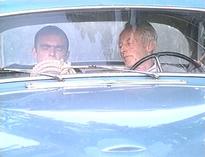
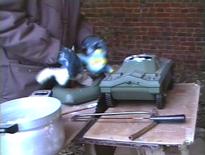
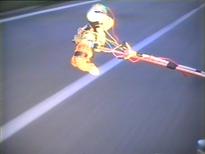
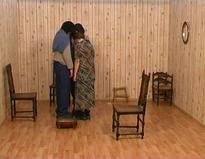
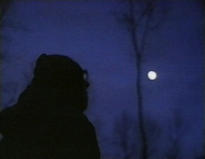
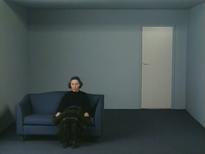
- ° 1965 Geel (Belgium). Lives and works in Brussels.
-
EVENTS
-
At view in the media library
WORKS